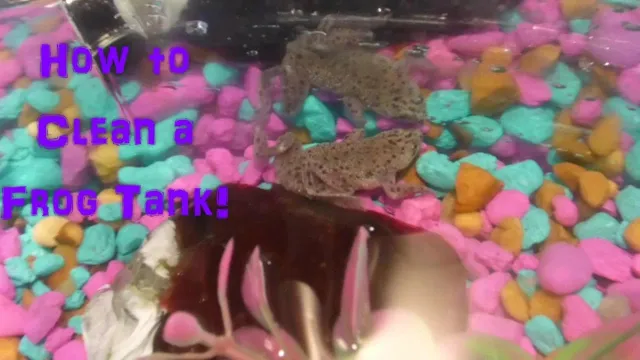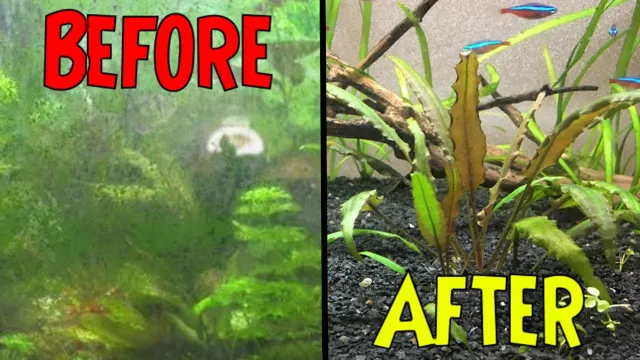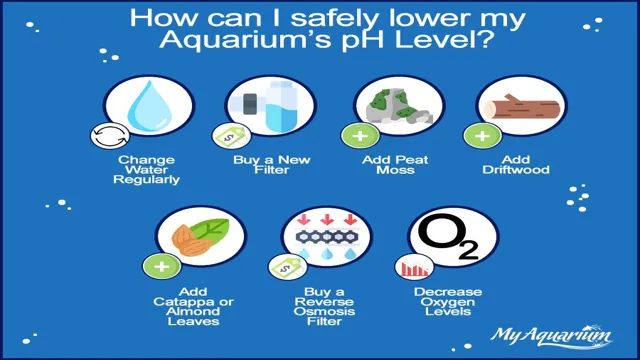How to Decrease Air Pump Aquarium Noise: 7 Simple Ways You Must Try
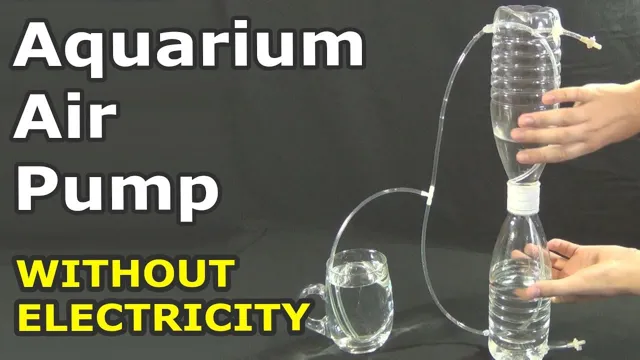
Aquariums are a great addition to any home or office, offering a peaceful and serene escape from the stresses of everyday life. However, maintaining a healthy environment for your fish can require a significant amount of energy usage. One of the biggest culprits is the air pump used to provide oxygen to the tank.
While important for the health of your aquatic pets, leaving it running for extended periods can lead to unnecessary energy consumption and increased electricity bills. That’s why finding ways to reduce air pump usage in aquariums is a crucial step towards sustainability and cost-efficiency. In this blog post, we’ll explore some simple yet effective methods that can help you save energy and money without compromising the health of your fish.
From adjusting water flow to utilizing live plants, we’ll cover everything you need to know to create a more eco-friendly aquarium. So let’s dive in!
Understanding the Need for Air Pumps
Air pumps are essential in maintaining the health and wellness of your aquarium. They regulate the flow of oxygen, which ensures that your aquatic pets are getting enough air to breathe. However, there may be instances when you need to decrease the output of your air pump.
For example, if you have a planted tank, excessive air flow can cause a significant loss of CO2, which is essential for plant growth. One way to decrease the output of your air pump is to use a flow regulator. This device allows you to control the amount of air that is being released, without the need to purchase a new air pump.
Another option is to use a sponge filter, which is designed to slow down the flow of air while still providing enough oxygen for your fish. Keeping a close eye on your aquarium’s water chemistry is important when making any adjustments to the air flow. By maintaining a healthy balance, you can ensure that your aquarium remains a safe and pleasant environment for all of your aquatic creatures.
Why do Aquariums Need Air Pumps?
Aquariums need air pumps to maintain a healthy environment for the aquatic creatures living within them. Air pumps help aerate the water, increasing the level of dissolved oxygen, which is essential for the survival of fish, plants, and other aquatic organisms. Additionally, air pumps promote the circulation of the water, ensuring that nutrients and oxygen are distributed evenly throughout the aquarium.
Without an air pump, stagnant water can form, leading to the growth of harmful bacteria and algae, which can harm or even kill the inhabitants of the aquarium. So, to avoid any potential issues and keep a healthy aquarium, investing in a good air pump is crucial.
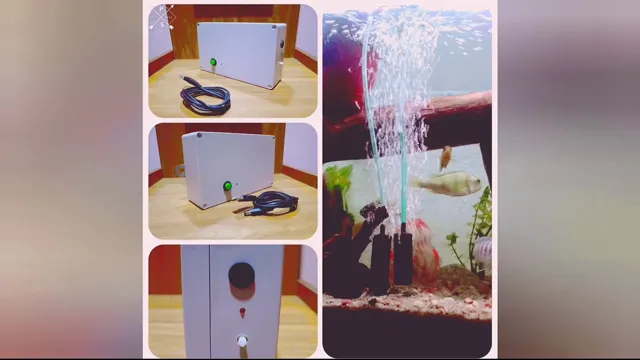
How do Air Pumps Work?
If you’re into aquariums or aquaponics, you have probably heard of an air pump. But what exactly is an air pump and how does it work? Simply put, an air pump is a device that pumps air into water through a tube or hose. Air pumps are an important component of aquariums and aquaponics systems because they help oxygenate the water, which is necessary for the survival of fish and plants.
The air pump works by utilizing a piston or diaphragm that moves back and forth to suck in air and then push it out through the tube or hose and into the water. The continuous motion creates a stream of bubbles that aerates the water and oxygenates it. So, the next time you’re admiring your aquarium or tending your aquaponics system, remember the important role that the little air pump is playing to keep everything healthy and thriving!
Assessing Air Requirements
There are a few things to consider when assessing the air requirements for your aquarium. One of the first things to look at is the size of your tank. A larger tank will require more oxygenation and circulation, while a smaller tank may only need minimal aeration.
Another factor to consider is the type of fish and plants you have in your aquarium, as different species have different oxygen requirements. It’s also important to make sure your air pump is not too powerful for your tank, as this can cause unnecessary turbulence and stress for your aquatic life. If you’re looking to decrease the amount of air pumping in your aquarium, you can try adjusting the flow rate on your air pump or investing in a more efficient pump.
Additionally, adding live plants can help increase oxygen levels in the water without relying solely on an air pump. Don’t forget to regularly clean your aquarium and change the water, as stagnant and dirty water can decrease oxygen levels and harm your fish. By properly assessing and adjusting your air requirements, you can ensure a healthy and thriving aquatic environment for your underwater residents.
Calculating Air Needs for Your Aquarium
Calculating Air Needs for Your Aquarium Assessing the air needs of your aquarium is an essential component to ensuring your aquatic pets thrive in a healthy and clean environment. The amount of air required for your aquarium depends on the size of your tank, the number and type of fish you keep, and the types of equipment you use. By using an air pump in combination with air stones and diffusers, you can maintain healthy oxygen levels in your tank that are vital to your fish’s survival.
Assessing your tank’s air needs involves calculating the volume of water in your tank and determining the recommended flow rate for the air pump. It’s important to remember that overloading your tank with too much oxygen can lead to increased noise levels and agitation for your fish. Likewise, underestimating your tank’s air needs can lead to low oxygen levels that can be deadly for your aquatic pets.
Taking time to properly assess and regulate your aquarium’s air needs will help ensure a healthy and thriving environment for your fish.
Matching Your Air Pump to Your Aquarium Size
When it comes to choosing the right air pump for your aquarium, it’s important to assess your air requirements based on the size of your tank. One thing to consider is the depth of your tank, as deeper aquariums require stronger air pumps to properly aerate the water. Another factor to keep in mind is the number and type of fish in your tank, as larger or more active fish require more oxygen than smaller, more passive fish.
It’s also important to note that the size of your air stone or diffuser can impact the amount of air needed. By taking these factors into account, you can choose the right air pump for your aquarium that will provide adequate aeration and keep your fish healthy and happy.
Alternative Methods
If you’re looking for alternative methods to decrease air pump usage in your aquarium, there are a few options you can consider. One option is to utilize a sponge filter instead of a regular air pump. A sponge filter still provides filtration and oxygenation, but at a lower rate and with less noise.
Another option is to use plants in your aquarium to naturally oxygenate the water. Plants consume carbon dioxide and release oxygen, which can help balance the overall oxygen levels in your aquarium. Adding more surface area to your aquarium by incorporating decor or rocks can also help increase oxygen diffusion and decrease reliance on an air pump.
Ultimately, reducing air pump usage can not only save energy and money, but it can also create a more natural and peaceful environment for your aquatic pets.
Using Sponge Filters to Reduce Air Pump Usage
Sponge filters are a great way to reduce the usage of air pumps in your aquarium. Not only do they provide excellent filtration for your fish tank, but they also increase the oxygen levels within the water. This means that you won’t have to run your air pump as frequently, which will help save on energy costs.
Additionally, sponge filters are incredibly easy to maintain and can last for years with proper care. They are also very affordably priced, which makes them a cost-effective option for aquarium enthusiasts. By using a sponge filter, you can reduce the amount of noise and energy consumption in your aquarium while still providing excellent filtration for your fish and other aquatic creatures.
It’s a win-win situation! So why not give sponge filters a try and see how they can improve your aquarium experience?
Exploring Other Types of Aquarium Filters
Aquarists are always on the lookout for ways to optimize aquarium filtration and keep their fishes healthy. One popular filter alternative is the use of a sump filter. Essentially, this filtration method uses a separate compartment or reservoir outside of the main aquarium tank.
The sump filter is designed to trap debris and impurities before allowing the water to pass back into the main tank. This filtration method is an excellent choice for large tanks as it can accommodate a higher capacity for filtration, leading to cleaner tank water. Additionally, sump filters make it easy to change filter media as the filtration element is easily accessible in the open sump.
Sump filters also provide the ability to add other equipment such as heaters and skimmers to improve water quality and overall aquatic life. Keeping fishes healthy is about maintaining great water quality, and a sump filter is a perfect tool to help maintain a healthy aquatic environment.
Maintenance and Troubleshooting
Reducing the air flow rate in an aquarium air pump is important, as excessive air can cause stress to fish and other aquatic animals. The best way to decrease air pump aquarium is to adjust the air valve. This valve can be found on the air pump itself, and controlling it enables you to regulate the amount of air that is being dispersed into the aquarium.
In addition, cleaning the air pump’s tubing regularly helps to maintain optimal performance. When troubleshooting any issues with your aquarium air pump, always start by ensuring that all of the components are properly installed and functioning correctly. If problems persist, contact a professional to help diagnose and resolve the issue.
By taking the time to maintain and troubleshoot your aquarium air pump, you can ensure your aquatic pets have a healthy and stress-free environment to thrive in.
Regular Cleaning and Maintenance Tips
When it comes to maintaining and troubleshooting your cleaning equipment, it’s essential to keep up with regular maintenance tasks. One of the most critical aspects of equipment maintenance is to clean your tools properly after every use. Failure to do so can cause buildup and deterioration, eventually leading to equipment failure.
Regular cleaning helps to prevent this and ensure that your tools remain in good working order. Another important aspect of equipment maintenance is to troubleshoot any issues as soon as possible. This can involve checking for loose parts, ensuring that circuits are correctly connected, and making sure that the equipment is lubricated and calibrated correctly.
By keeping up with regular cleaning and maintenance tasks, you can extend the life of your cleaning equipment and ensure that it remains in peak condition for years to come.
Identifying and Fixing Common Air Pump Issues
Air pump maintenance is crucial in ensuring that your system runs smoothly. With proper upkeep, your air pump will work efficiently and last longer. One common issue with air pumps is a decrease in airflow due to a clogged air filter.
Checking and cleaning the air filter regularly is an easy fix to this problem. Another issue is a damaged or worn-out diaphragm, which can cause a decrease in air output or even complete failure. Replacing the diaphragm is a quick repair that can save you money by avoiding the purchase of a whole new pump.
Additionally, it is important to regularly check the tubing, fittings, and valves for any damage or leaks, as these can also compromise performance. By addressing these common issues promptly, you can prolong the life of your air pump and ensure that your aquatic creatures are thriving.
Conclusion
In summary, reducing the noise level of your aquarium air pump can be achieved through a variety of simple and practical methods. From finding the perfect location to utilizing noise-cancelling materials, there are plenty of solutions to keep your fish and your ears happy. So, don’t let the hum of a loud air pump ruin the tranquility of your aquatic haven – employ these tips and tricks to turn down the volume and enjoy a peaceful underwater oasis!”
FAQs
What are the benefits of decreasing air pump usage in an aquarium?
Decreasing air pump usage can reduce noise levels in the aquarium, save energy, and prevent excessive water turbulence that can harm aquatic animals.
How can I reduce air pump usage in my aquarium?
You can reduce air pump usage by using a more efficient filter, lowering the water level, or using alternative methods of aeration such as live plants or surface agitation.
What are some risks of using too much air in an aquarium?
Excessive air can cause stress in aquatic animals, damage delicate plants, and increase oxygen levels beyond what is necessary for stable water conditions.
How can I tell if my aquarium has too much air?
Signs of excessive air include excessive bubbling or agitation, stressed or gasping fish, and overly foamy or turbulent water.
Can I still use an air pump in my aquarium if I want to?
Yes, an air pump can still be used for aesthetic purposes or to provide additional oxygenation if necessary. However, it is important to ensure that the air flow is not excessive and that the water conditions remain stable.
What are some alternative methods of aeration for my aquarium?
Live plants, surface agitation, and using a filter that creates water movement can all be effective methods of aeration without the use of an air pump.
Are there any benefits to using an air pump in an aquarium?
Yes, an air pump can help increase oxygen levels in the aquarium, provide additional filtration, and create aesthetically pleasing bubbles. However, it is important to ensure that the air flow is not excessive and that the water conditions remain stable.

